Hong Kong – Some submariners call the USS Connecticut the luxury sports car of submarines. It’s a $3 billion piece of American military hardware that’s fast and outfitted with the latest electronic gadgetry only available when price is not a consideration.
But despite its high cost and sophisticated tech, the United States Navy says the Seawolf-class nuclear-powered attack sub ran smack into an undersea mountain in the Pacific on October 2.
The Connecticut is now pierside at a US Navy base on the Pacific island of Guam. The Navy says it got there — more than 1,800 miles east of the South China Sea — under its own power and its nuclear reactor was not harmed, although 11 of its crew of suffered minor injuries in the collision.
The Pentagon has not released details of the damage the vessel incurred nor how long it might be out of action in a region which, with the rise of the Chinese navy, is seeing growing demands on the US fleet.
Which leaves US military planners with some big questions to answer in the coming weeks and months.
Not the least of which is, how did this happen?
Driving a submarine
The Navy on Thursday gave a hint of what might have led to the accident when it relieved the Connecticut’s leadership of their command due to loss of confidence.
The commanding officer, Cmdr. Cameron Aljilani, was relieved of duty, as were the executive officer, Lt. Cmdr. Patrick Cashin, and the chief of the boat, Master Chief Sonar Technician Cory Rodgers.
Vice Adm. Karl Thomas, commander of US 7th Fleet, determined that “sound judgment, prudent decision-making and adherence to required procedures in navigation planning, watch team execution and risk management could have prevented the incident,” according to a statement about the decision.
The undersea environment is unforgiving and even small mistakes can have huge consequences.
“Submarining is hard, it’s really hard. Not everything goes right all the time,” said Thomas Shugart, who spent more than 11 years on US submarines, including commanding an attack sub.
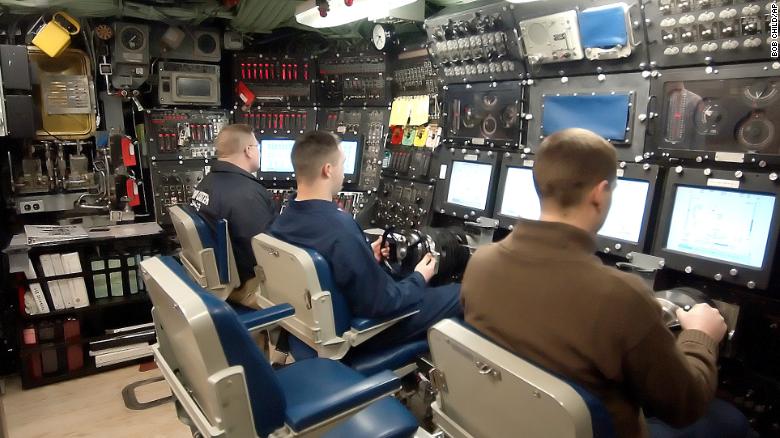
Surface ships or a sub operating at periscope depth can relay on global positioning satellites to give sailors a very accurate location, said Shugart, now an adjunct senior fellow at the Center for a New American Security.
But at depth, the GPS systems are not available. Submariners use their compasses and charts.
Accurate charts (with a resolution of 328 feet) of the sea bottom are compiled by sending surface ships over an area and bathing the bottom in sound waves — a method called multi-beam sonar.
But the process is expensive and time consuming, leaving as much as 80% of Earth’s seafloor unmapped.
In the busy South China Sea, through which a third of the world’s maritime trade passes and where China has been building and militarily fortifying man-made islands, less than 50% of the sea bottom has been mapped, David Sandwell, a professor of geophysics at Scripps Institution of Oceanography in California, told CNN.
“It’s not surprising that you could run into something,” he said.
The US Navy has not said exactly where the Connecticut hit the seamount.
Officially, the service says it was in Indo-Pacific waters, but US defense officials had previously told CNN it occurred in the South China Sea.
Sandwell tried to narrow down the area.
Using a method called vertical gravity grading — taking satellite altimetry measurements of the Earth’s gravitational field — and overlaying those results with mapping of the bottom of the South China Sea, he was able to identify 27 places where the Connecticut could have hit a seamount that was not on US Navy charts.
“These are places where the gravity predicts there is something shallower than 400 meters (1,312 feet), around the depth where a submarine might run into it,” he said.
Officially, the Navy says Seawolf-class subs have a maximum depth of more than 243 meters (800 feet), although some experts put their maximum depth around double that.
Submarines do have their own sonar, but using it comes at a price — loss of stealthiness.
Those sonar pings — so ubiquitous in submarine movies — also give away the sub’s position to opposing forces.
“Sonar is your only way to look at the bottom, but you don’t want to put out more sound than you have to,” Shugart said.
“You’d have to do that about every 20 seconds or so,” to get an accurate picture, Sandwell said. “It makes a lot of noise.”
When it comes to knowing the terrain beneath them, even astronauts might have it easier than submariners, according to Shugart.
“Basically, the surface of the moon is better charted than the bottom of the ocean is,” he said.
A history of submarine groundings
The USS Connecticut isn’t the first US Navy sub to be involved in an underwater collision.
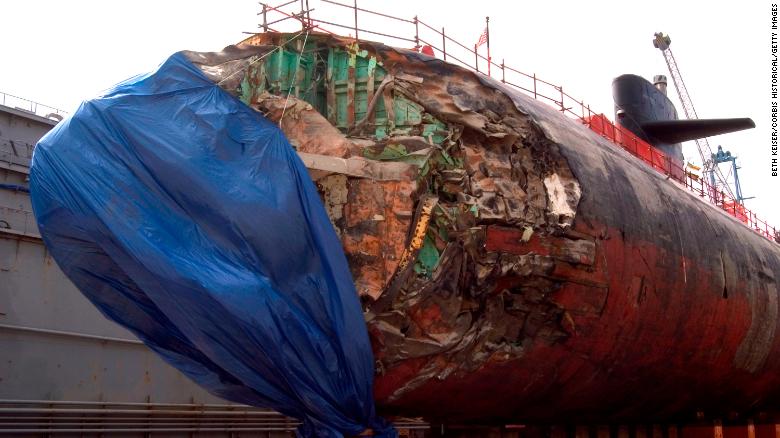
On January 8, 2005, the USS San Francisco, a Los Angeles-class attack submarine, struck a seamount about 350 miles south of Guam in the Pacific Ocean.
The incident killed one sailor and injured 97 others among the crew of 137.
A Navy investigation concluded the San Francisco was traveling at maximum speed at a depth of 525 feet when it hit the seamount, which was not on the chart the sub’s commanders were using at the time.
But the probe found the commanders should have known the undersea mountain was there based on other charts in their possession, which indicated a navigational hazard in the area.
“If San Francisco’s leaders and watchteams had complied with requisite procedures and exercised prudent navigation practices, the grounding would most likely have been avoided,” the Navy report said. “Even if not wholly avoided, however, the grounding would not have been as severe and loss of life may be been prevented.”
Other incidents have been less serious but illustrate the difficulties of maneuvering subs even in familiar waters.
For instance, in November 2015, the USS Georgia, an Ohio-class guided missile submarine, struck a channel buoy and grounded as it was returning to port in Kings Bay, Georgia.
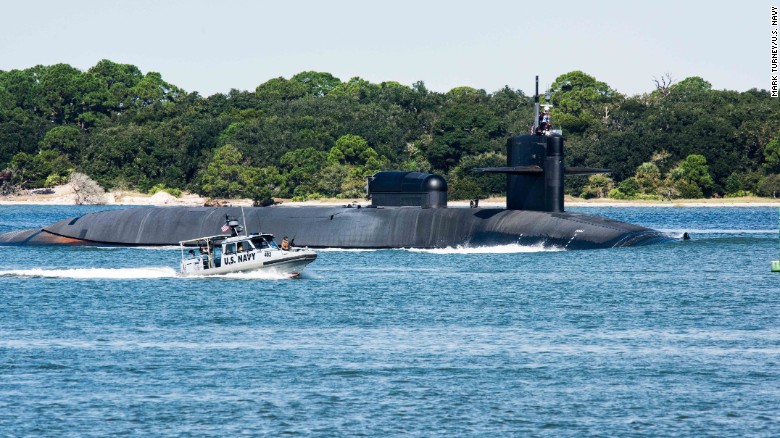
The 18,000-ton, 560-foot-long sub sustained more than $1 million in damage and its captain was relieved of command.
And in 2003, the USS Hartford ran aground while entering a NATO base in Spain, resulting in a $9 million repair bill and its commander being relieved of duty.
Despite those incidents, Shugart, the former US Navy sub commander, defends the US Navy’s record under the sea.
“We have more submarines, they spend more time at sea, they go a lot farther away from home and they operate at higher speeds than probably anybody else’s,” he said.
“We do the most challenging submarine missions that anybody does and the farthest away from home,” he said, adding: “even the pros have bad days.”
What makes the USS Connecticut so special?
The Connecticut is one of three Seawolf-class submarines in the US Navy fleet, each costing about $3 billion to build. The 9,300-ton, 353-foot sub, commissioned in 1998 and is crewed by 140 sailors.
Like all modern US Navy attack submarines, the Connecticut is powered by a nuclear reactor, which enables it to be fast but quiet, with none of the noise produced by a combustion engine. Nuclear power enables such subs to stay at sea and underwater as long as provisions for the crew hold out.
The Navy doesn’t give exact figures in publicizing the abilities of its submarine, but experts say the Seawolf-class is exceptional.
“These subs have some of the most advanced — in fact the most advanced — underwater capabilities in the business,” said Alessio Patalano, professor of war and strategy at King’s College in London.
The Navy says it is “exceptionally quiet, fast, well-armed, and equipped with advanced sensors.”
A Navy fact sheet says the Connecticut is capable of going faster than 28 mph (46.3 kph) under water. That’s faster than the average container or cargo ship on the surface of the sea and almost as fast as the US Navy’s Arleigh Burke-class destroyers.
As it is larger than even the newest Virginia-class attack subs, the Connecticut can carry more weaponry than other US attack submarines — including up to 50 torpedoes as well as Tomahawk cruise missiles, according to a US Navy fact sheet.
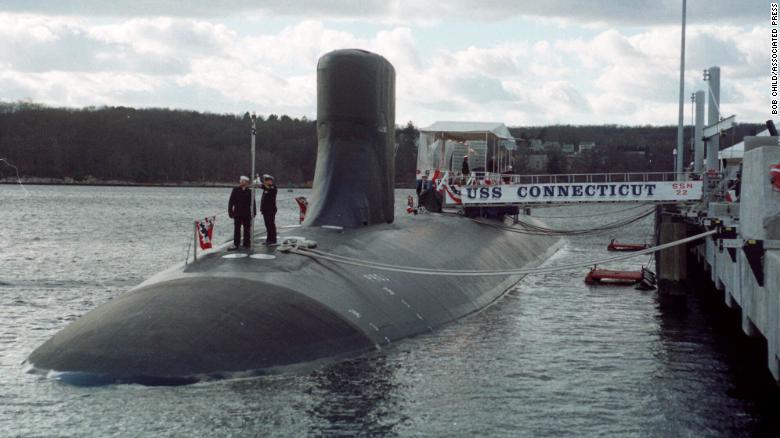
And despite being more than 20 years old, it’s also technologically advanced with updates to its systems performed during its service life.
Though the Navy doesn’t give details on the missions its submarines undertake, the three Seawolf-class subs are thought to be important intelligence-gathering assets, especially in shallower environments.
“The robust design of the Seawolf class enables these submarines to perform a wide spectrum of crucial military assignments — from underneath the Arctic icepack to littoral regions anywhere in the world,” the manufacturer, General Dynamics Electric Boat, says on its website.
“Their missions include surveillance, intelligence collection, special warfare, cruise missile strike, mine warfare, and anti-submarine and anti-surface ship warfare,” Electric Boat says.
With no combat taking place in the South China Sea, the focus of the sub in the current environment is likely to be in intelligence gathering.
And that’s why China is paying close attention.
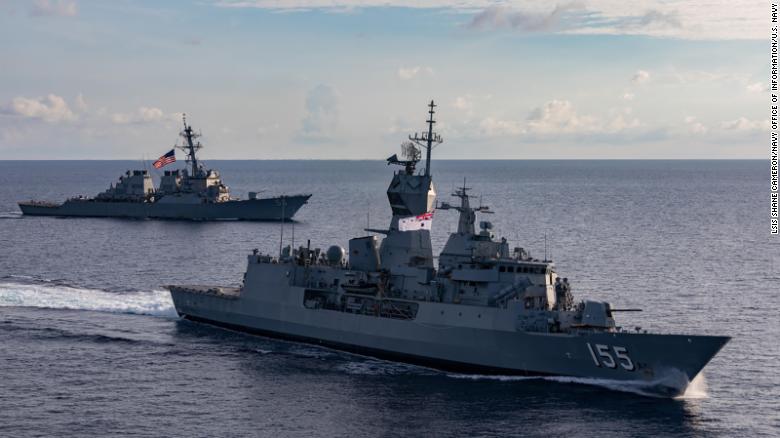
Questions from Beijing
Following the collision, Beijing has accused Washington of not being forthcoming about what happened and how it could affect countries around the South China Sea.
“We have repeatedly expressed our grave concern over the incident and asked the US side to take a responsible attitude and provide a detailed clarification so as to give a satisfactory account to the international community and countries in the region,” Chinese Foreign Ministry spokesperson Wang Wenbin said this week.
Washington issued its first public statement on the collision five days after it occurred. It did not disclose the fact that the Connecticut hit a seamount until earlier this week, nearly a month after the incident.
US Navy officials told CNN on Wednesday the delays stemmed from concerns including keeping the damaged sub safe and ensuring a thorough investigation of the incident, as is standard.
“Due to operations security, we could not disclose the location of the submarine or the incident to the public at an earlier date,” Cmdr. Hayley Sims, a public affairs officer for the US 7th Fleet, said in an email.
Sims said two internal investigations were launched, one on the command of the sub and a second on safety procedures.
The first, she said, “determined USS Connecticut grounded on an uncharted seamount while operating in international waters in the Indo-Pacific region” and has been submitted to 7th Fleet commanders for review.
The second probe, being conducted by Submarine Force, US Pacific Fleet in Hawaii, is ongoing.
A spokesperson for the sub force, Cmdr. Cindy Fields, told CNN this week the submarine is in “a safe and stable condition” at the port in Guam.
“USS Connecticut’s nuclear propulsion plant and spaces were not affected and remain fully operational,” she said.
The Navy said Thursday the Connecticut would be moved to Bremerton, Washington, for repairs.
According to a report by the state-run Xinhua news agency, Chinese Foreign Ministry spokesman Wang called on Washington to clarify “the intended navigation of the nuclear submarine, whether the specific location of the incident was in an exclusive economic zone or territorial sea of any other country, or whether the incident has caused nuclear leakage or damaged the marine environment.”
The US has not revealed any of those details, but when it comes to the South China Sea, Washington’s policy is consistent.
After a US destroyer performed a freedom of navigation operation in the waterway in September, a US 7th Fleet statement responded definitively to Chinese objections: “The United States will continue to fly, sail, and operate wherever international law allows,” the statement said. “Nothing (China) says otherwise will deter us.”
As reported by CNN
